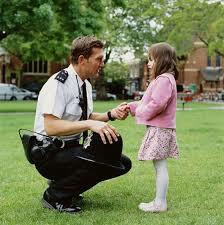Introduction
Childhood is a crucial stage in the development of every individual. During this very period, basic skills and behavioral patterns are formed (Gabriel, 2014). Additionally, a child acquires a set of values and attitudes that impact his/her mentality and shape his/her character. For this reason, numerous research papers are devoted to the comprehensive investigation of childhood and its fundamental features. Moreover, there are diverse constructions and conceptualizations of this phenomenon in modern visual culture that reflect existing perspectives on ways children should evolve and traditional associations related to this concept. Thus, the central aim of the paper is to critically analyze all constructions mentioned above and show how images depicting children or childhood reveal the meaning of the concept and its significant aspects. The given goal is achieved by using principles of visual analysis.
Background
The visual culture of the society at a certain period of time can be considered a reflection of the existing system of values and dominant behavioral patterns. That is why the investigation of particular aspects of this phenomenon can provide a researcher with data needed to conclude about the meaning of concepts and their sense. There are diverse visual methodologies providing multiple opportunities for the in-depth analysis of images or their sets. In accordance with these, their meaning can be understood using textual conventions constructing them, the idea of how objects are presented, and their surroundings (Shrott & Warren, 2017). It means that the analysis of the way childhood is conceptualized in visual culture can be performed by investigating pictures and photos offered by media and meaningful details like mood, light, shades, environment, individuals depicted by the image, and the message it conveys.
Current Trends
In such a way, the method of visual analysis selected for the investigation of the concept of childhood includes the assessment of photos reflecting the most topical trends associated with this phenomenon. Thus, according to the recent research, the shift of priorities towards humanistic values resulted in the medias attempts to create a particular idealized image of a child that will help to promote the essential values (Shaw & Tan, 2014). These include health, happiness, social protection, wealth, family care, and a positive environment (Lindgren, Sparrman, Samuelsson, & Cardell, 2014). That is why the majority of images found on the Internet or other media platforms contain one or another element reflecting the features mentioned above (Shaw & Tan, 2014). At the same time, the modern media culture also offers photos depicting problematic issues such as child labor, hunger, illnesses (Nguyen & Mitchell, 2012). This assumption can be proven by analyzing particular visual representations of childhood.
Happiness
The first image selected for the investigation of the concept of childhood and its visualization in culture depicts a positive child who smiles playing with his peers. Applying the central elements of visual analysis, several aspects should be admitted.

First of all, the children in the photo are positive and happy. It is a fundamental message of the given image, which also reveals one of the critical elements of the concept. In other words, modern collective thinking and media cultivate the idea of a happy and socialized child (Garlen & Sandlin, 2017). At the same time, in accordance with the existing idealized concept, childhood is the happiest period in peoples lives, and the given photo tries to convey this message to viewers by creating the image of a positive and satisfied child who spends his time in social games with peers.
Family
Another image reflects the importance of family and the role it plays in childrens lives. It is an essential part of the concept of childhood peculiar to the modern society and visual culture as media often demonstrates photos of families consisting of both parents and their kids (Paananen, 2017). Usually, these images are full of bright colors; they also depict happy individuals. The given pattern is preserved with the primary aim to promote traditional values and emphasize childrens need for a family, which remains a central element in adolescents lives (Paananen, 2017).

The selected image also conveys this message by demonstrating a child who is surrounded by loving people and feels their care. This conceptualized idea remains central to the modern culture and is often offered by different means of media as a part of the concept of childhood and its significant parts.
Social Protection
The next critical part of the visual culture that reflects perspectives on how a child should grow and the quality of his/her life is social protection. There is a particular group of images depicting children in complex situations; however, they are supported either by their families or other individuals who are provided with enough authority to help adolescents and protect them from potential abusers or aggressive behaviors (Gabriel, 2014). This idea is another important element of the concept of childhood that is visualized using diverse photos appealing to individuals’ responsibility and positive feelings towards children.

Additionally, regarding the tendency towards the increased number of abusive behaviors towards children (Wells, 2014). The modern media tries to use images of this sort to promote desired behavioral patterns among community members and cultivate the existing idea of protected childhood.
Problematic Concerns
Finally, the existing visual culture suggests some problematic issues related to childhood that should be addressed by communities to find an appropriate solution and improve the situation. For instance, the existing concept condemns forced labor (Wells, 2014). There are multiple regions where adolescents perform complex tasks and work in difficult conditions. That is why there are many images depicting young workers and emphasizing the impossibility and unacceptability of the given phenomenon in modern society.

Traditionally, children are shown dirty, tired, miserable, and unhappy. They might be surrounded by adult workers to emphasize the contrast and appeal to viewers sympathy. In such a way, the attempt to reveal problematic areas and attract peoples attention to them can be considered another part of the concept of childhood presented in the modern media.
Conclusion
Altogether, the existing visual culture reflects some important elements of the concept of childhood. Regarding the dominance of humanist values peculiar to modern society, the given phenomenon is associated with such notions as happiness, family values, social protection, the absence of significant problems, and care. That is why the majority of childrens images provided by media depict happy and positive children who enjoy the better time of their lives. At the same time, there is a particular sort of images that point out existing problems and tend to attract communities attention to the need for an efficient solution. In conclusion, the existing visual culture regarding the concept of childhood is perfectly reflected by existing means of media which shows childhoods critical elements and results in the prevalence of particular images offered by multiple sources.
References
Gabriel, N. (2014). Growing up beside you: A relational sociology of early childhood. History of the Human Sciences, 27(3), 116 – 135. Web.
Garlen, J. C., & Sandlin, J. A. (2017). Happily (n) ever after: the cruel optimism of Disney’s romantic ideal. Feminist Media Studies, 17(6), 957-971.
Lindgren, A., Sparrman, A., Samuelsson, T., & Cardell, D. (2014). Enacting (real) fiction: Materializing childhoods in a theme park. Childhood, 22(2), 171 – 186. Web.
Nguyen, X. T., & Mitchell, C. (2012). On the use of visual methodologies in educational policy research. South African Journal of Education, 32(4), 479-493.
Paananen, M. (2017). The imaginaries that survived: Societal roles of early childhood education in an era of intensification. Global Studies of Childhood. Web.
Shaw, P., & Tan, Y. (2014). Constructing digital childhoods in Taiwanese children’s newspapers. New Media & Society, 17(11), 1867-1885. Web.
Shrott, H., & Warren, S. (2017). Grounded visual pattern analysis: Photographs in organizational field studies. Organizational Research Methods. Web.
Wells, K. (2014). Childhood in a global perspective. Malden, MA: Cambridge.